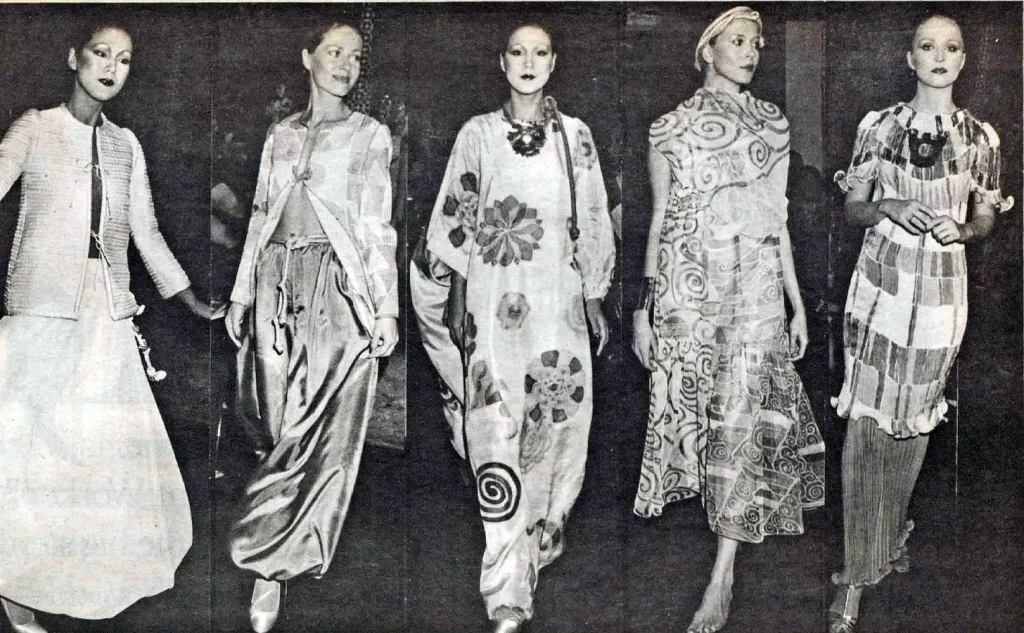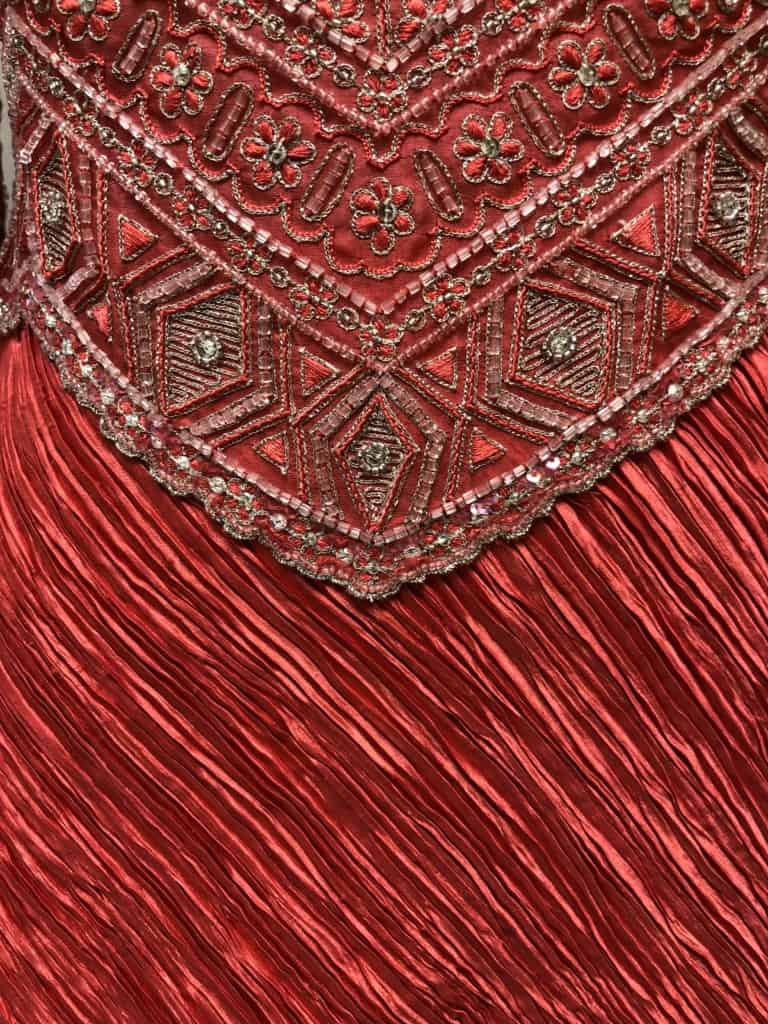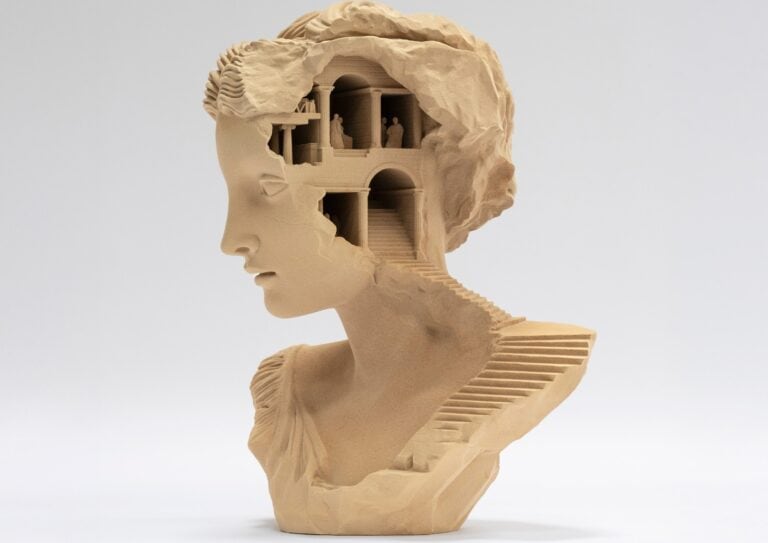
Recalling McFadden’s Artistic Legacy
Patrick Michael Hughes
Mary McFadden, fashion designer, editor, collector, and inveterate world traveler—has long been hailed as a “fashion archeologist,”. A title that encapsulates her unique approach to design and cultural preservation. McFadden passed away on September 13th, 2024, at her home in Southampton, Long Island. Leaving behind a legacy that intertwined fashion, anthropology and the fine arts.
Education
Born in New York in 1938 to a prominent family. McFadden’s early exposure to the richness of global art and culture laid the groundwork for her signature style. Educated at elite institutions including the Foxcroft School in Virginia, École Lubec at the Sorbonne in Paris, New York’s Traphagen School of Design, Columbia University and the New School for Social Research. McFadden developed a unique worldview that combined intellectual rigor with an artistic sensibility. Her career as the Director of Public Relations at Christian Dior New York. And later as the Merchandising Editor for Vogue South Africa, aided in establishing her within the upper echelons of the fashion world.
Marriages
In 1964, she married Philip Harari, the diamond heir and merchant at De Beers. In a lavish Park Avenue wedding attended by fashion and art luminaries such as Diana Vreeland and Andy Warhol. This marriage marked her further entrée high society. Yet it was her extensive travels and immersion in non-Western cultures. Plus her career as a travel and political colonist in South Africa. Which led to founding the Vukutu Sculpture Workshop Rhodesia ( Zimbabwe) that would have an indelible impact on her creative journey. She began to fashion simple tunic style garments for herself out of necessity in traditional African textiles and remnants of Asian silks.
McFadden’s second marriage, to Frank McEwen, the director of the National Gallery in Zimbabwe, deepened her fascination with the rich artistic traditions of Africa, Asia, and South America. It was during this time that she began to develop the ideas that would later shape her eponymous fashion label, launched in 1976.






Photo Credits Manii fabric detail – Textiles and Clothing Museum University of Iwoa, Spring Summer 1976 photographed by Pierre Sherman. Dress detail Drexel University. Photo in tunic by McFadden. Photo in Manii gown Textile and Clothing Museum University of Iowa. Photos by Eisuke Ishimuro 1977
Designs
Her designs, particularly her iconic pleated gowns, drew inspiration from ancient Greek Chiton drapery. Were often infused with intricate beadwork, luxurious Asian silks, and textiles inspired by indigenous craftsmanship. Her work has been compared to the revolutionizing lost heat-based silk pleating technique of Mariano Fourtny for his Delphos Gowns. McFadden’s textile iteration was called Marii a washable satin backed polyester. Her silhouettes also took influence form Ancient Egyptian and Greek clothing forms. It was an ideal fashion statement for the last of the jet set and world travelers of the nineteen seventies. It is important to note that this too added to the stories associated with McFadden’s work in connection to the visual tapestry of global cultures. With each collection telling a story of far-flung journeys, ancient customs, and artistic reverence.
Global decorative arts to the status of high fashion
Her garments did more than adorn the body. They reflected her deep understanding of the interconnectedness of fashion, global lifestyles and anthropology. Her gowns, were not merely decorative but were meant to echo the timeless silhouettes of classical antiquity, reimagined for the modern woman. In her role as a designer, McFadden did more than just create clothing. She elevated the global decorative arts to the status of high fashion. Her garments were a form of wearable art. Where every pleat, bead and stitch carried a story from cultures that spanned continents. By integrating non-Western decorative arts into her designs, McFadden made a significant statement on the universality of beauty and craftsmanship. Often challenging the Eurocentric narratives that dominated the fashion industry.

Her contributions were recognized through numerous accolades. Including serving as the president of the Council of Fashion Designers of America (CFDA). Winning the CFDA Lifetime Achievement Award and being honored with the United Nations Women Together Award. Inducted into the Coty Hall of Fame, McFadden was a two-time Coty American fashion Critics Award in 1976, 1977 and 1979. Plus the Neiman Marcus Award in 1979. Among numerous other accolades and awards further cemented her place as a pioneering force in fashion.



(Photographs by Michael Moran of McFadden’s New York City Apartment July 1999)
Designer as brand
In the Spring of 1977 McFadden introduced a wallpapers and fabrics in partnership with Raintree Designs. A division of Kirk‐Brummel Associates a firm known for its luxurious textiles. The designer also created tableware, including china and glassware, sheets and linens, carpets and area rugs that were an interplay of textures related in theme to her fabrics. She was part of the business trend of the ‘designer as brand’. A licensing business model to further expand the market share of a new concept of designer lifestyle. She was instep with fashion counter parts such as Yves St. Laurent, Pierre Cardin, Missoni, Bill Blass, Halston were all in the home decor market during the late nineteen seventies.
In January 2024, the renowned auction house Doyle unveiled items from her vast collection of fine and decorative arts. Offering a rare glimpse into the personal world of a designer whose aesthetic sensibilities extended far beyond the runway. Her collection, which included everything from African masks to Grecian vases. Reflected the same eclectic and anthropological curiosity that shaped her fashion career. These pieces, like her clothing, were collected with a keen eye for history, artistry, and cultural significance.
Mary McFadden’s legacy
Her legacy transcended her role as a designer. She was a cultural conduit, bringing the richness of global traditions to the forefront of fashion. Her work reminds us that fashion is not merely about trends. But is a dialogue between the past and the present, between cultures, and between art and function. As the fashion world reflects on her contributions. Her influence as an artist, collector, and designer will continue to inspire future generations. Prompting us to ask not just what fashion is, but what it can be. The world eagerly anticipates the stories her collected works will continue to tell, as her timeless vision endures.

Share this post
Patrick Michael Hughes is a fashion and decorative arts historian. He writes about fashion culture past and present making connections to New York, London and Copenhagen's fashion weeks with an eye toward men's fashion. He joined IRK Magazine as a fashion men's editor during winter of 2017.
He is often cited as a historical source for numerous pieces appearing in the Wall Street Journal, The New York Times, CNN, LVMH, Conde Nast, Highsnobiety and others. His fashion career includes years as a fashion reporter/producer of branded content for the New York local news in the hyper digital sector. Patrick's love of travel and terrain enabled him to becoming an experienced cross-country equestrian intensively riding in a number of locations in South America Scandinavia,The United Kingdom and Germany. However, he is not currently riding, but rather speaking internationally to designers, product development teams, marketing teams and ascending designers in the US, Europe and China.
Following his BA in the History of Art from Manhattanville College in Purchase, New York he later completed graduate studios in exhibition design in New York. it was with the nudge and a conversation in regard to a design assignment interviewing Richard Martin curator of the Costume Institute at the Metropolitan Museum of Art he was encouraged to consider shifting his focus to the decorative arts with a concentration in fashion history and curation.
Patrick completed graduate studies 17th and 18th century French Royal interiors and decoration and 18th century French fashion culture at Musée Les Arts Decoratifs-Musée de Louvre in Paris. Upon his return to New York along with other classes and independent studies in American fashion he earned his MA in the History of Decorative Arts and Design from the Parsons/Cooper Hewitt Design Museum program in New York. His final specialist focus was in 19th century English fashion and interiors with distinction in 20th century American fashion history and design.
Currently, he is an Associate Teaching Professor at Parsons School of Design leading fashion history lecture-studios within the School of Art and Design History and Theory,
Read Next




